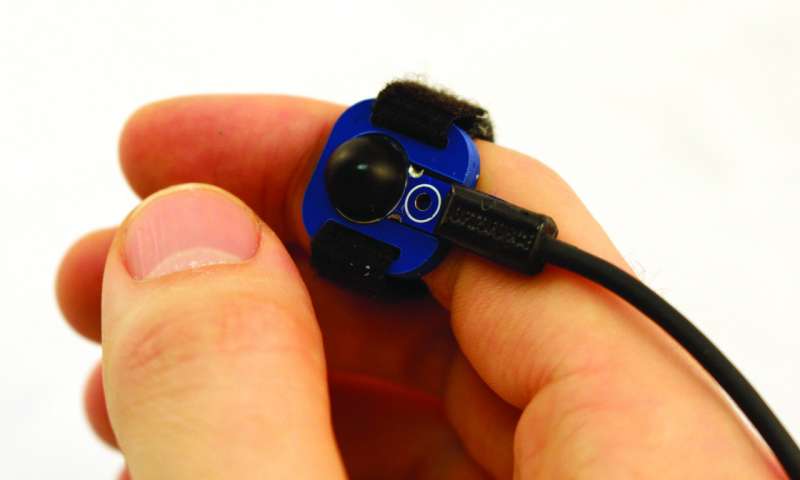
Mobile devices, such as the new version of Apple Watch, are used for a variety of activities. One reads on them short news, surfs the Internet and verifies health values. But these mini-computers have a drawback: Due to the small screen size, it is difficult to use. Computer scientists from the University of Saarland have now developed an alternative, which they call “DeformWear”. A tiny switch, not larger than a pinhead, is, for example, incorporated into a ring and worn on the body. It can be moved in all directions, push in and out, and also slide to the right, left, up and down.
“For mobile devices such as the Smartwatch, the interactive screens are so small that only a few touches can trigger a few control commands,” explains Jürgen Steimle, Professor of Human Machine Interaction at the University of Saarland. With his research group in the cluster of excellence “Multimodal Computing and Interaction” he is looking for new ways to use small mobile devices on the body as inconspicuously and quickly as possible. In an earlier research project, Steimle and his co-worker Martin Weigel have already demonstrated that human skin is also suitable for input. During this study the idea for the current project came to them. “We found out that our students did not just take the already familiar smartphone gestures out of the skin,
Further research led them to a sensor, which should actually make robot hands more sensitive. “Even if the sensor for the robotics was developed, we found the low form factor promising for mobile devices worn on the body,” says Weigel. In this case, a small form factor describes a sensor measuring only ten millimeters in size, which has the size of a pea and is deformable like an air balloon. From the inside, an infrared light-emitting diode emits the variable membrane. The light is reflected and measured by four photodiodes. This can be used to calculate how the sensor is being deformed.
To test their idea, the researchers integrated this sensor into a ring, bracelet and amulet, which is barely bigger than a 50 cent piece. The challenge now was to develop gestures to control mobile devices. The researchers did this for a smart watch and for glasses, with which one can immerse in the virtual reality. They also defined movement sequences to control a TV and play music without watching. The Saarbrücken computer scientists were tested by 24 people, a total of 18,141 times. Their results are clear. “Despite the tiny surface, the interactions are precise and expressive, as they exploit the precise motility of the fingertip and use the three basic forms of pressing, pushing and pinching,” says Weigel.
Professor Jürgen Steimle is convinced: “If only a tiny sensor has to be deformed for the inputs, devices can be worn at body points, which enable quick and unobtrusive operation. This will help the industry to bring even smaller ECUs to the market. ”
Learn more: Mobile devices on the body can be operated precisely and discreetly via a pin head
The Latest on: DeformWear
[google_news title=”” keyword=”DeformWear” num_posts=”10″ blurb_length=”0″ show_thumb=”left”]- Feed has no items.
via Google News and Bing News









